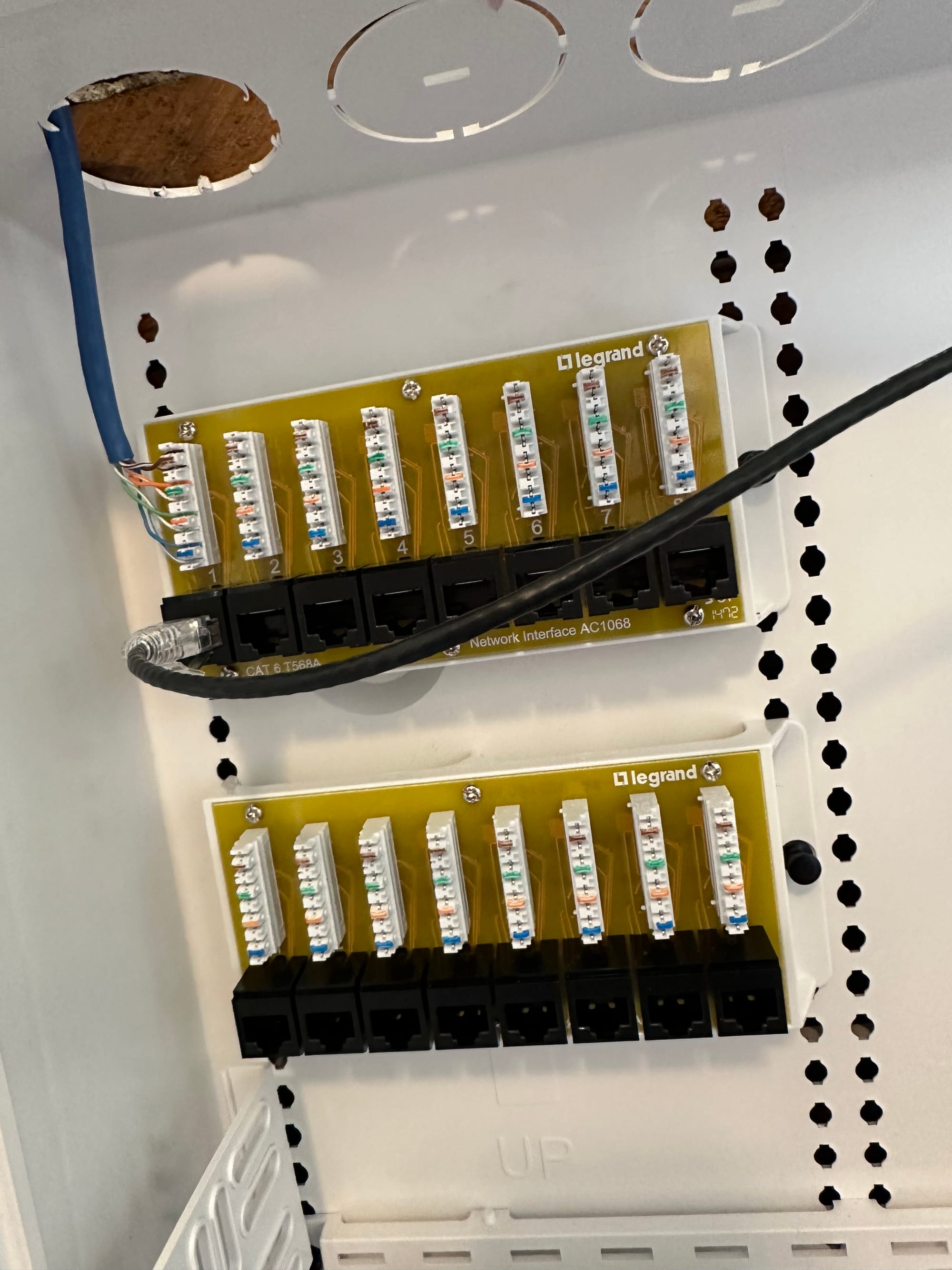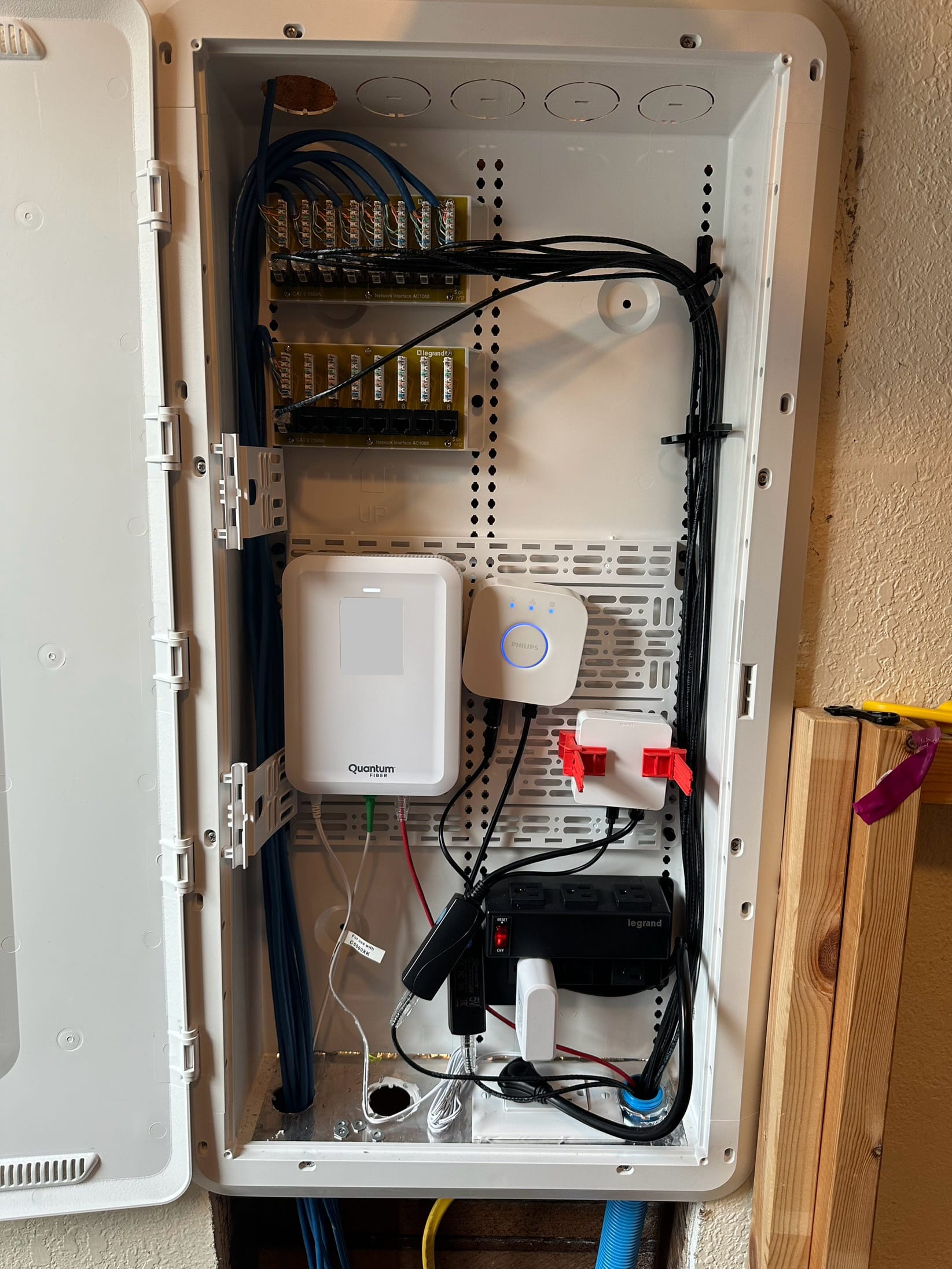As promised, I am providing an update on the status of my structured wiring enclosure. This has been a fun project for me to work on, which stemmed from my want to improve the internet reliability in my home—primarily the WiFi.
It all began when I wanted a better solution to having stable WiFi upstairs. My home was built in 1910, and the upstairs was converted from an attic space in the 1950’s. Downstairs, the walls are composed of a layer of plaster over lathe, appropriate for the time, under a layer of drywall. This is fairly typical for Tacoma homes of this era. Upstairs, things get a little weird. The walls upstairs have 3/4 inch cedar shiplap underneath drywall. These things combined equal WiFi dead zones without some creative thinking—and so began the drilling and cursing.
I won’t go into all of the details of running structured cabling throughout a home built in 1910, just know it was dirty, loud, and annoying. In the end I ended up installing several ports upstairs alongside wireless access points and a PoE doorbell. Originally all of these cables were just kind of hanging out inside of the wall cavity, and then inside of a Legrand On-Q structured wiring enclosure, but I knew I needed something more permanent to protect the cat 6 cables.

Since my last post on the subject of the internet in my home, I installed network interface modules to terminate the structured wiring into. This allows me to run flexible patch cables from the enclosure to my rack, enabling more flexible, less fragile, cabling to endure the moving of the rack.

As you can see, I also moved a couple of smart home hubs into the enclosure. The Philips Hue Bridge and the Lutron Hub. They are performing well enough inside of the enclosure, and I am powering them with PoE splitters. (Be careful if you do this. This is not the original hue bridge I started this project with…pay attention to voltage.)
Overall, I am happy with the current state of the enclosure. Things are working perfectly, things are neat and tidy, and there is room to expand. If you embark on this project yourself, the best advice I can give is to research the system you go with from the beginning. I chose the Legrand system because the enclosure is of high quality and there are plenty of accessories available. These enclosures are not always compatible with accessories from other brands, so it is important to research everything up front.